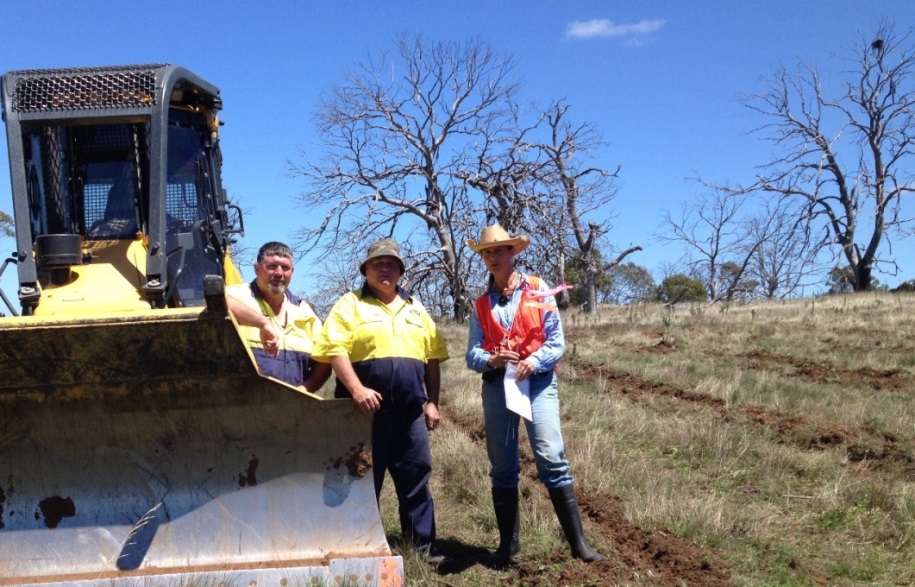Dieback Project
This project aims to address the extensive tree dieback phenomenon (within a 5,000 sq km region in SE NSW) that has continued to shock the Monaro region since around 2005. The dieback phenomenon is influenced by many factors but appeared to be initiated by a decade long drought that occurred for most of the 2000’s and which ultimately led to trees being defoliated by the Eucalypt weevil and that was ultimately responsible for tree death. Many thousands of dead (and still dying) trees scar the mostly open landscape. The species most affected is Eucalyptus Viminalis (Ribbon Gum/ Mana Gum) - a most majestic and extremely large tree species that provides many resource values. We intend to tackle the problem of dieback by recreating native vegetation plots (using best practice and locally adapted planting methodologies) on 10 plots in visible locations within the dieback affected area. For two plots we intend to engage an indigenous land manager to perform cool winter burns to encourage natural regeneration.
Revegetation work commences as Upper Snowy Landcare employ Dieback Project Manager 2 days per week
Media Release - February 2016
The Upper Snowy Landcare Committee (USLC) have embarked on a large scale revegetation project amongst the dieback scarred hills between Cooma and Berridale and with funding from Local Land Services have put on an employee to manage the action.
Dieback project work has now commenced with contractors ripping 8ha of tree lines over four properties situated in the visual corridor of the Kosciuszko Highway. Everyone who has driven this stretch of Highway will be familiar with the mass loss of mainly Eucalyptus viminalis (Ribbon or Manna Gum) trees along the ridges. These monster trees, that once provided refuge to a host of native and domestic animals, now effectively haunt the vast open landscape.
The primary cause of death is unknown with endless opinions ranging from; the past drought causing the trees to weaken and thus more prone to Eucalyptus weevil (native) attack which then ultimately kills them; lack of seasonal cool ground cover burning; soil fungus or the trees just naturally dying off at the edge of their range. Despite the cause, the tree loss has fractured habitat connectivity making life difficult for animal species such small bush birds, reptiles, terrestrial and arboreal mammals from moving under the safety of the tree canopy to feed and breed. Also the tree loss has opened up country to new erosion events and weed incursion, not to mention the tremendous loss of shelter belt benefits and the danger of trees falling on people and fences.
To get the ball rolling the USLC have employed Lauren Van Dyke as the Dieback Project Manager, having engaged her previously on a short contract. Ms Robin Sevenoaks, USLC Chair said, “the USLC committee is so energised to work on this unique and dire situation it has committed significant money to establish four trial revegetation plots”.
“Each of the visual plots will be sown down to more than 1000 mixed species of local trees and wattles. Not only that, every step of the preparation and planting process will be written up in a free ‘how to guide’ as we follow the Monaro Tree Nursery planting methodology”.





